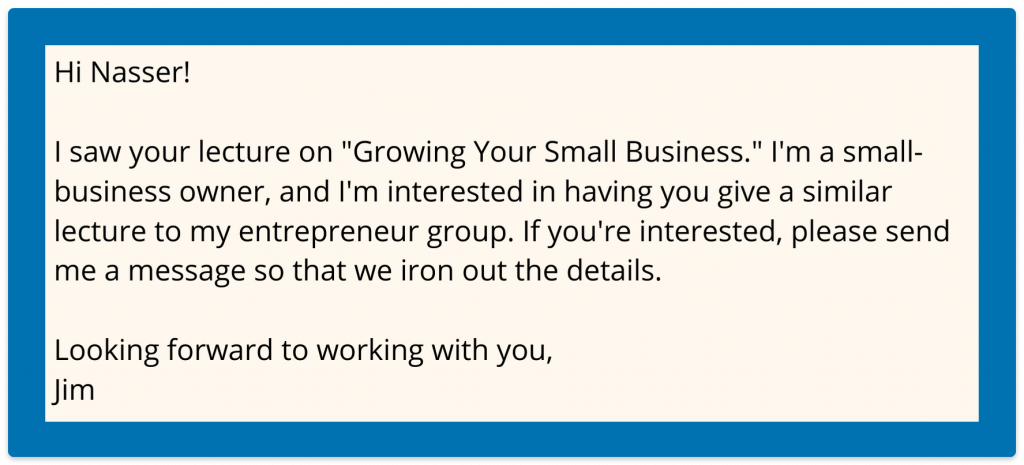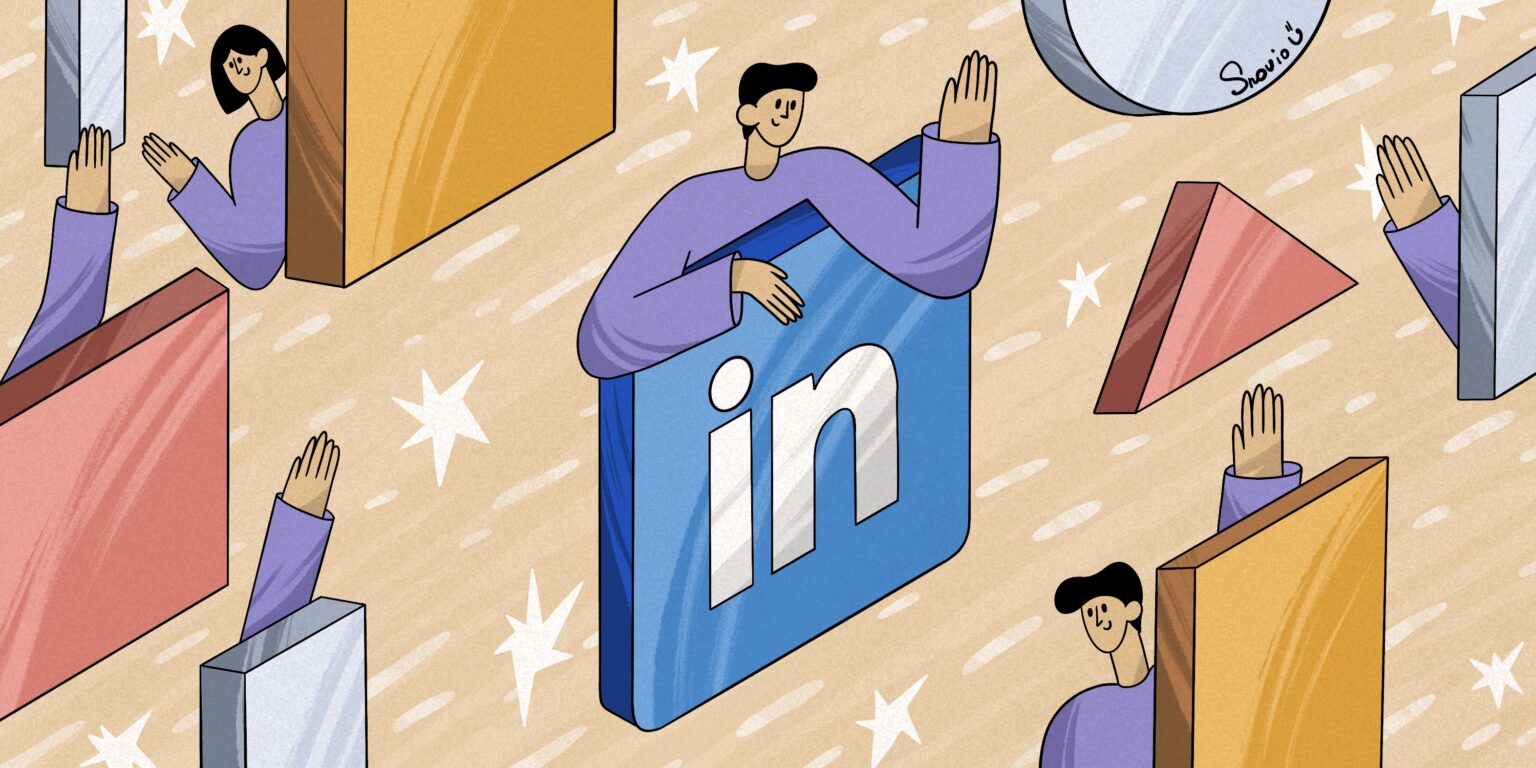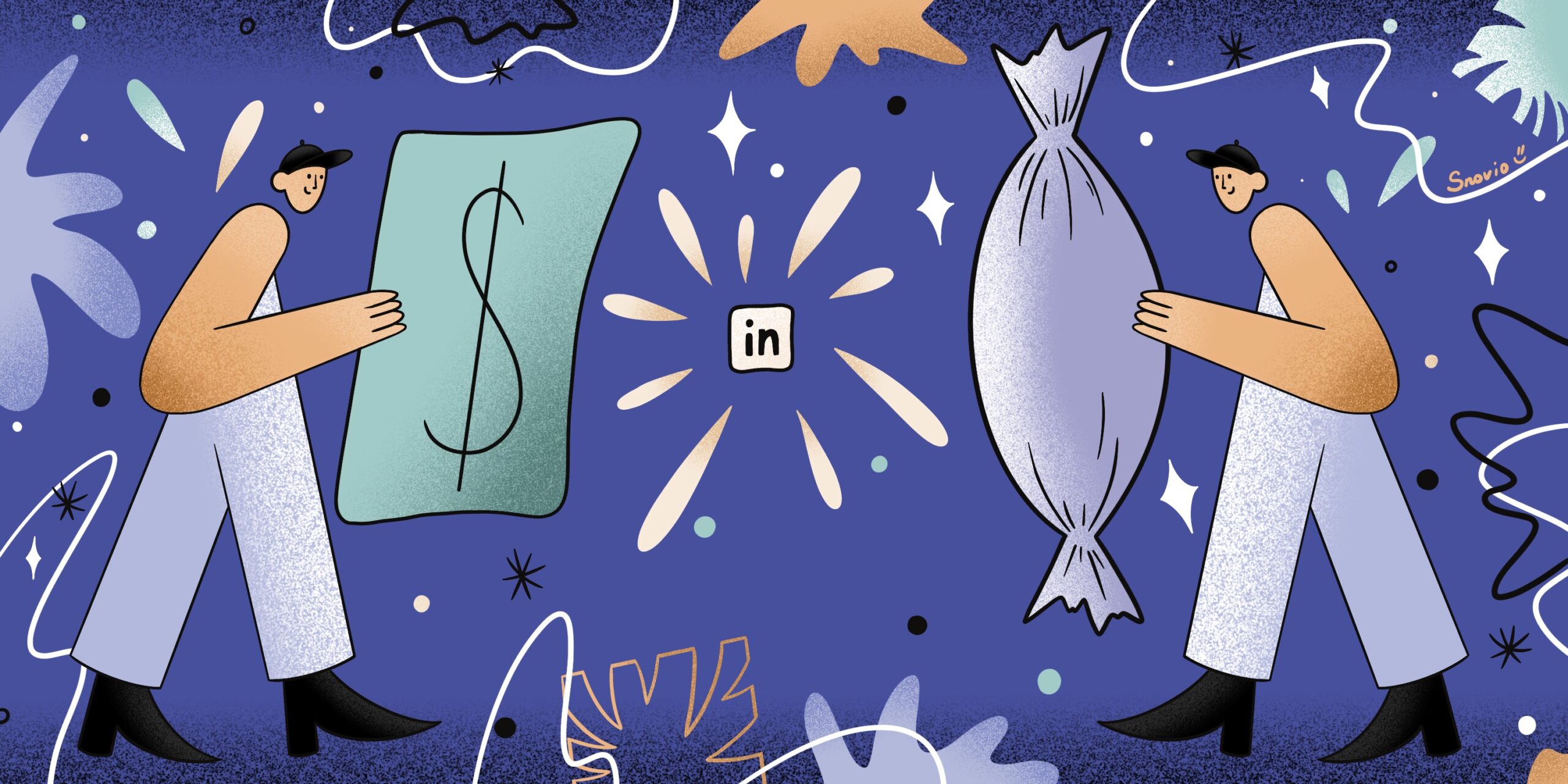Social selling is a priority for many sales organizations. And it’s no surprise, as a staggering 98% of sales reps with 5,000 or more connections on LinkedIn meet or surpass their target quota. This illustrates the power of LinkedIn when it comes to influencing B2B sales. In fact, around 80% of leads come from LinkedIn, far more than from any other social platform.
These days, however, using LinkedIn has become somewhat like wielding a double-edged sword. While the platform allows you to connect with anyone you please, the ease of connection means it has a reputation for being a source of unsolicited spam for its users.
So, what are the keys to encouraging people to connect with you on LinkedIn? Here are seven of the best practices for making meaningful LinkedIn connections that we have found to be effective.
Outline:
Personalize your message
The Internet is a noisy place, and LinkedIn is no exception. Users that have got impersonal and generic messages don’t feel the need to respond because they feel they are likely going to be one of the many recipients of the same canned request.
We know how tempting it can be to send the LinkedIn connection request as it is. But even spending five minutes of your time personalizing it may do wonders. Add the lead’s name, share how you know of them, mention something significant they did, and it can greatly increase the chances of your connection request getting accepted. 83% of customers say being treated like a person instead of just another “number” is important in winning them over.
In a nutshell: Taking the time to personalize a connection request can make the difference between getting accepted and getting ignored. Make sure to include your prospect’s name, how you encountered them, and a clear call to action (CTA).

Explain why you’re reaching out
For every connection request that you’re going to send on LinkedIn, your reason for reaching out should immediately be visible. Being upfront about why you want to make a connection with your prospect will make them more willing to grant your request. A whopping 94% of consumers say they are more likely to engage with a brand if there is complete transparency.
Josh Kaufman, a bestselling business author, points to the 1970 experiment conducted by psychologist Dr. Ellen Langer at Harvard University. It was simple: students asked people waiting in line at a busy copy machine if they could move to the front of the line, using different approaches.
The goal of the experiment was to see what would make people agree to a request. The results were staggering: when the request was given straightforwardly, it was honored 60% of the time. However, adding a reason for it increased the compliance rate to 95%.
These results point to a clear correlation between how a request is justified and the rate by which it’s granted. Explaining the “why” behind a statement is a commonly used copywriting technique, and you should utilize it in your Linkedin connection requests.
In a nutshell: Every connection request that you make on LinkedIn should have a clear reason you’re reaching out because it can dramatically increase the acceptance rate.

Include a reference to a common connection that you have
LinkedIn shows all mutual connections that you and your prospect have, which makes finding shared connections easier. However, LinkedIn users have become increasingly wary of these mutual connections. One of the reasons for it is that name dropping is now a favored tactic of people looking to leverage being connected to well-known personalities to their advantage.
We’re not saying that you shouldn’t use name dropping when trying to send a connection request. We’re just saying that you should learn how to use it discerningly. There are two ways you can go about it:
- Ask that mutual connection to introduce you to the lead via LinkedIn InMail or email. Users are more likely to engage with someone they know professionally than with a third-party connection.
- If the person can’t make the introduction themselves, at least make them aware of your intent to connect with a prospect and see if they recommend that you go ahead with it.
In a nutshell: Use name dropping sparingly and wisely. Either ask your mutual connections to introduce you or have their blessing to connect with your lead.

Recommend a credible third-party source
Offering solutions to pain points is a great way to incentivize a prospect to respond to your connection request. However, to avoid looking like a salesperson wanting to reach their quota, the solution that you offer should be from a credible third-party source.
Whether you’re using case studies from reputable organizations or blogs from well-known marketers, you need to show that you are also familiar with the source and how the knowledge can be used to fix a problem that your prospect has.
You also need to be careful to choose resources that are completely unrelated to your business or service to avoid looking like you are self-promoting. Again, no one likes feeling that they’re being “closed” at the first meeting.
In a nutshell: Use your connection request to offer a solution to your lead’s pain points. Avoid selling your products at this point yourself because it’s an immediate turn-off for many customers.

Praise your prospects’ work in a genuine manner
This tip mainly applies to prospects that work in companies you are a customer of. Still, this doesn’t mean you can’t find ways to highlight how their work can be relevant to you whether in a personal or professional manner.
If you are reaching out to such leads, being specific with how their product or service has helped you makes your message more authentic. If you can take it one step further and directly point to how your prospect had a personal hand in making this solution great, your connection request will be received even better.
For example, say you’re reaching out to a certain person who works in the development team for a software product you use. You have a first-hand experience of its new feature that automates a task that used to take you several hours each week. What’s more, you know that your prospect took the lead on the development of that feature. So, when you craft your connection request, you can thank them for helping make this feature a reality.
However, we must give a word of caution at this point: there is a line between giving genuine praise and using fake flattery. Keep in mind that a short message doesn’t always have the nuance of spoken language, and your words can easily come across as insincere.
To avoid this, we recommend reading your connection request aloud before sending it. If it sounds fake to your ears, chances are that your prospect will perceive it in the same way.
In a nutshell: Praising your lead for their professional achievements is a great way to make a request connection more personal. It also shows that you respect your prospect’s professional output enough to research them.

Start a conversation naturally
A connection is much more meaningful to both parties when it starts with a dialogue. You can incentivize your prospect to accept your connection request if there is a conversation that will make them feel like they want to add their input.
We found that an effective way to do this is to open up a discussion with your CTA. If you complement it with something specific that your prospect has done that has piqued your interest, you can turn it into an invitation for a dialogue where your prospect will give you more information.
This strategy further combines two elements that have already been discussed above, namely being upfront about the reasons for your connection request and giving praise for your prospect’s professional achievements.
Here, again, we should point out that there are ways to start a conversation that will have an organic flow. You can try using the same tactic of reading the message aloud before sending it to gauge whether it sounds natural. If your conversation request sounds robotic or rehearsed to you, that will probably be how it will come across to your prospect.
In a nutshell: Encourage a conversation with your connection request. Combine a frank reason for your reaching out with praise and a CTA for your prospect. This will increase the chances of a positive reply.

Follow up (but don’t be too pushy about it)
We’re going to share one of the secrets that separate a businessperson from a “closer:” the follow-up. A businessperson may think that they’ve done their job after sending their pitch. But a closer knows that the follow-up is often what seals the deal. In fact, studies have shown that 80% of sales often need more than four follow-ups to close!
This same logic is true in trying to establish a meaningful LinkedIn connection. If you think that your job is done after sending the connection request, then you’re not making a good effort. And as we’ve emphasized before in this blog post: laziness on your part will get you the same response.
LinkedIn allows its users to send a maximum of 3,000 connection requests. Imagine receiving even a fraction of those requests and sifting through them one by one! The fact is, a connection request that comes from an unfamiliar source has a greater chance of being ignored.
There are several reasons your connection request might have been ignored, such as:
- It sounded like a sales pitch rather than a genuine connection request
- You didn’t personalize the message
- You didn’t introduce yourself properly
- Your introduction message was too long

These reasons, and more, are enough to prevent a prospect from accepting your connection request. However, this doesn’t mean you should give up trying. This only means you should identify your mistake and avoid making it when you write your follow-up.
And here’s the last piece of advice: good closers also know when to quit. If you inundate your prospects with repeated connection requests, they could report you to LinkedIn and have your account restricted or even permanently blocked.
What we’re trying to say is that when you do your follow-up, be respectful and mindful when doing so. If your lead has not replied after several attempts, learn to accept that there will be connection requests that will fall through and move on.
In a nutshell: Follow up, but don’t be too pushy or aggressive about it.
Bottom line
Creating a sure-fire connection request on LinkedIn is by no means an exact science. You’ll probably go through a lot of trial-and-error before you find your groove. What’s more, a strategy that can net you an instant connection request acceptance with one prospect might not necessarily work with another lead.
We feel that these seven tips will give you the best chance of crafting an effective connection request. When you think about it, they are simple and easy to do: make a connection request personal, give reasons you want to connect, and follow up if your prospects don’t reply. It’s no more complicated than making a connection in person.
We can even argue that making a connection in person might be a bit more difficult because it requires you to be spontaneous and to think on your feet. With a LinkedIn connection request, you have all the time in the world to carefully craft your message at every stage.
Taking the time to follow these rules to write your message will be one of the best things you’ve ever done for your LinkedIn connections. For every ounce of effort you put in, you have the chance to get tons of benefits in return.



Great tips and everyone can agree that LinkedIn has become a great platform where all professionals gravitate to.